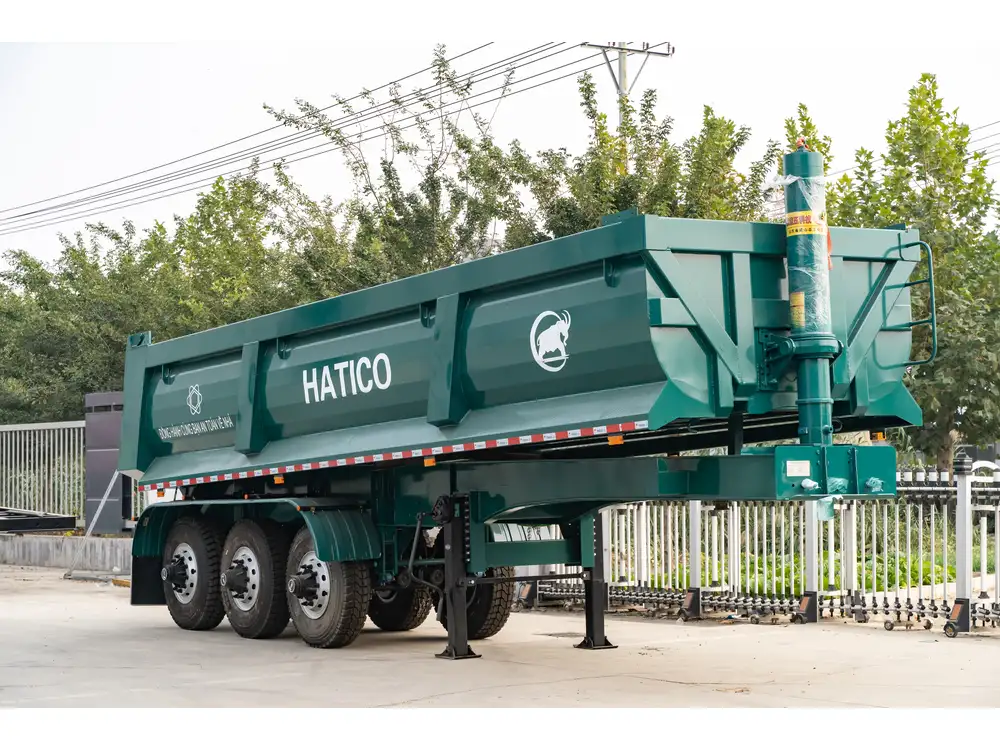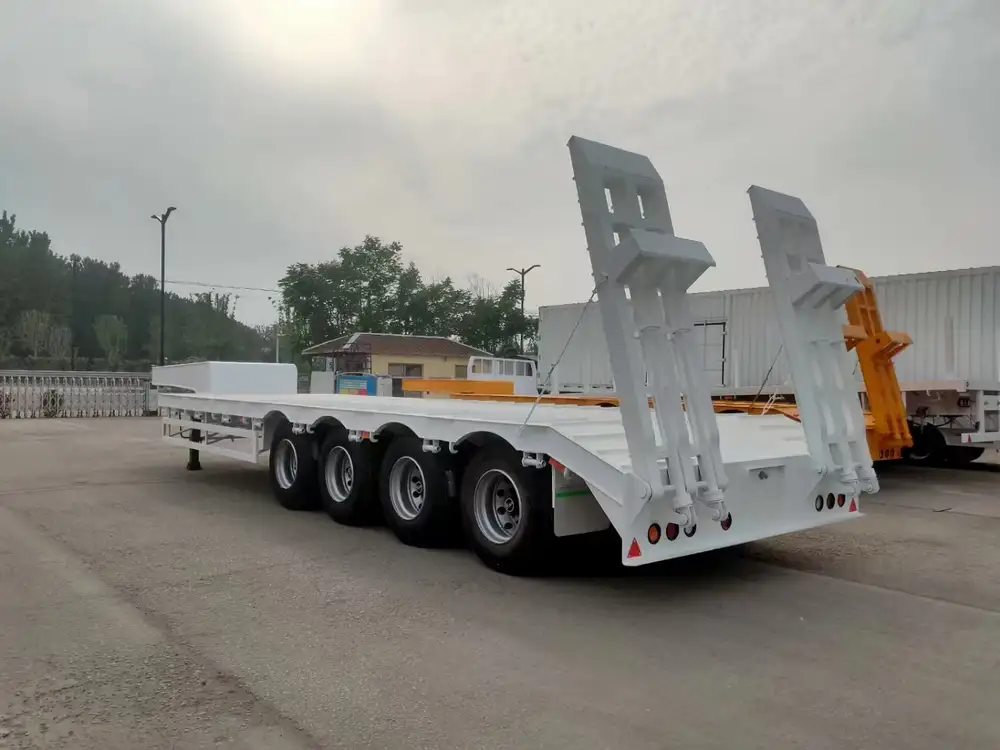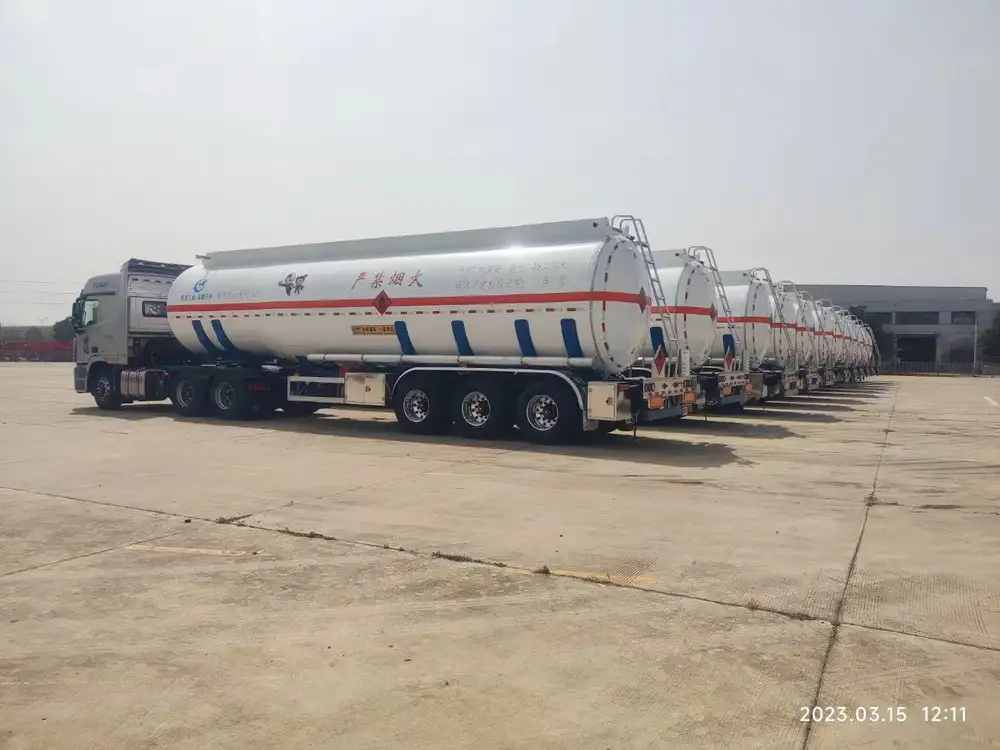Linking a semi-trailer plate to a company is a critical step for manufacturers, transport operators, and logistics firms alike. It ensures compliance with legal regulations, allows for seamless tracking of assets, and serves to enhance brand visibility in a competitive market. Below, we delve into the multifaceted approach required to effectively connect a semi-trailer plate to a business entity while ensuring compliance, gaining competitive advantages, and boosting operational efficiency.
Understanding the Semi-Trailer Plate
What is a Semi-Trailer Plate?
A semi-trailer plate refers to the identification plate affixed to semi-trailers. This plate typically includes regulatory details such as VIN (Vehicle Identification Number), weight specifications, and compliance information. The purpose extends beyond mere identification—it serves as a document of legitimacy, enabling the trailer to operate legally on public roads.

Importance of Linking to a Company
Linking the semi-trailer plate to a company holds vital implications:
- Legal Compliance: Registration connects the trailer with a responsible entity, complying with local, state, and federal regulations.
- Asset Tracking: Improved monitoring of fleet locations and statuses, essential for timely deliveries.
- Brand Visibility: Promoting company ownership boosts brand recognition.
Steps to Link a Semi-Trailer Plate
1. Gather Required Documentation
Before initiating the process, assemble all necessary documentation:
- Primary Business Documents: Including business licenses, tax identification numbers, and corporate registration.
- Trailer Details: Such as the Vehicle Identification Number (VIN), weight rating, and any other pertinent specifications.
- Proof of Insurance: Necessary to ensure compliance and protection.
| Document | Purpose |
|---|---|
| Business License | Verifies legal operation in the industry |
| Tax ID Number | Identifies business for taxation purposes |
| VIN | Unique trailer identification |
| Insurance Documents | Ensures legal compliance for operation |

2. Register The Semi-Trailer
a. Consult Local Regulatory Authorities
Engage with local Department of Motor Vehicles (DMV) or equivalent authorities to understand specific regulations concerning semi-trailer registration.
b. Complete Required Forms
Obtain and complete the registration form for semi-trailers. This form may require detailed information about both the trailer and the business entity linked to it. Be thorough and precise to avoid any future complications.

3. Submit the Application
Once the necessary forms are completed:
- Compile all documents.
- Submit to the respective authorities—this may include physical submission at a local office or electronic submission through online channels.
4. Pay Necessary Fees
Most jurisdictions have a fee structure associated with the registration of semi-trailers. Ensure prompt payment to avoid penalties or delays in processing. Keep records of all transactions.
Compliance and Regulations

Understanding Local Regulations
Each state or region has its own set of regulatory requirements for semi-trailer plates:
- Size and Weight Limits: Different jurisdictions may impose specified dimensions and weight limits for semi-trailers.
- Safety Standards: Compliance with safety regulations outlined by organizations such as the Federal Motor Carrier Safety Administration (FMCSA).
| Regulatory Aspect | Description |
|---|---|
| Size and Weight Limits | Defines acceptable dimensions and weights |
| Safety Standards | Outlines required safety equipment and protocols |
| Emission Standards | Regulations on environmental impact |
Keeping Up with Changes
Stay updated with any modifications to the regulatory framework. Utilize resources such as industry newsletters or federal bulletins to maintain compliance.
Benefits of Linking a Semi-Trailer Plate

Enhanced Operational Efficiency
By effectively linking a semi-trailer plate to a company:
- Streamlined Fleet Management: Helps track the status and location of each trailer seamlessly.
- Improved Maintenance Scheduling: Linked systems facilitate timely maintenance and reduce downtime.
Risk Mitigation
Properly registered semi-trailer plates reduce:
- Legal Risks: Avoid fines or penalties stemming from improper registration.
- Insurance Complications: Streamlined claims processes by providing streamlined identification sources.
Technology Integration in Linking Processes

Digital Tools for Registration and Management
Incorporating technology can greatly enhance the trailer management process:
- Fleet Management Software: Platforms that allow tracking of registrations, maintenance schedules, and compliance checks.
- Mobile Applications: Enable real-time status checks for trailers linked to the company.
| Technology Type | Benefit |
|---|---|
| Fleet Management Software | Centralizes trailer data for efficient management |
| Mobile Applications | Provides real-time access to trailer information |
Utilizing Serial Number Tracking
Establishing a system for serial number tracking can further improve maintenance and performance assessment. This system will allow companies to:
- Monitor the condition of each semi-trailer.
- Schedule preventative maintenance proactively based on usage statistics.
Common Pitfalls to Avoid

Incomplete or Incorrect Documentation
One of the most frequent hiccups arises from:
- Submitting incomplete applications: Always double-check forms for missing information.
- Errors in data entry: Minor mistakes can lead to significant compliance issues.
Ignoring Regulatory Updates
Failing to stay current with regulatory changes may result in:
- Lapsed registrations: A trailer out of compliance could face fines or even impoundment.
- Safety Violations: Non-compliance with safety updates could impact overall operational integrity.
FAQs on Linking Semi-Trailer Plates

What Happens If I Don’t Link a Semi-Trailer Plate?
Failing to link a semi-trailer plate to a business can have severe repercussions including:
- Legal Fines: Heavy penalties for operating unregistered trailers.
- Inability to Operate: Law enforcement may impound the trailer.
How Often Should I Update the Registration Information?
Registration information should be reviewed and updated:
- Annually, or whenever there is a change in company ownership or information pertaining to the trailer itself.
What Are the Penalties for Non-Compliance?
Penalties can vary significantly:
- Monetary fines, towing, and potential business restrictions could all fall under non-compliance repercussions.

Conclusion
Linking a semi-trailer plate to a company is a multifaceted process that requires attention to detail, compliance with regulations, and a proactive approach to fleet management. By understanding the necessary steps, documentation, and potential pitfalls, businesses can ensure their semi-trailers operate legally, efficiently, and in alignment with their company goals. Investing time in this critical process not only secures legal standing but also enhances operational efficiency and showcases a commitment to safety and professionalism across the transport industry.



